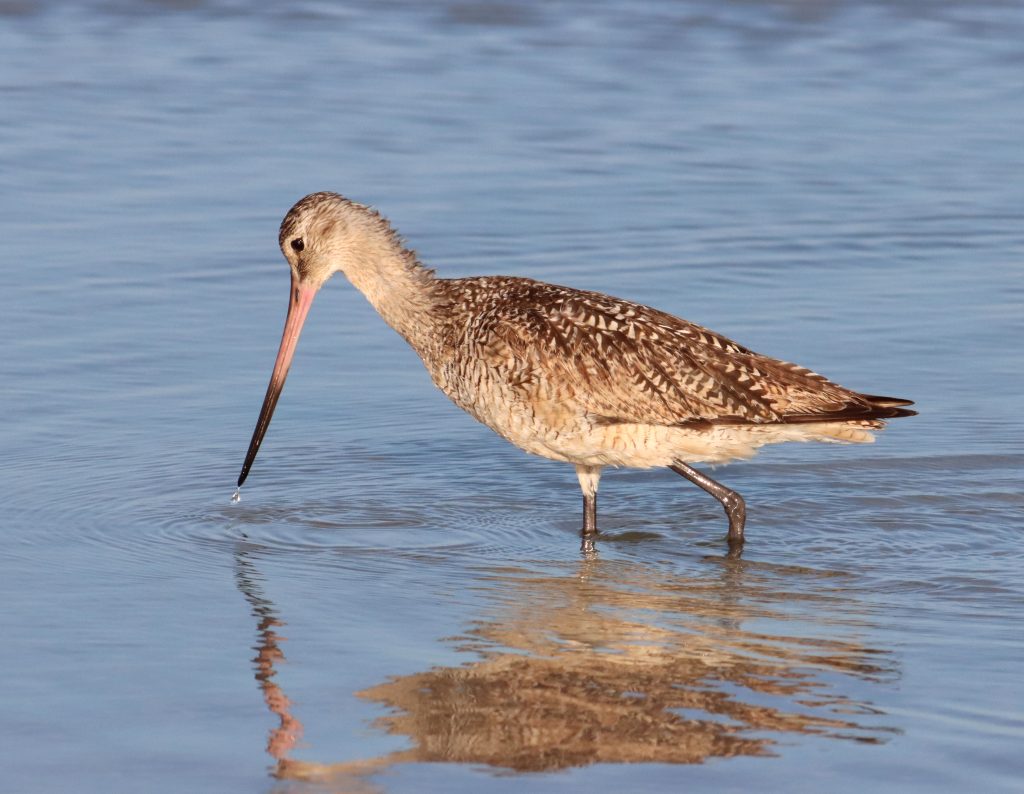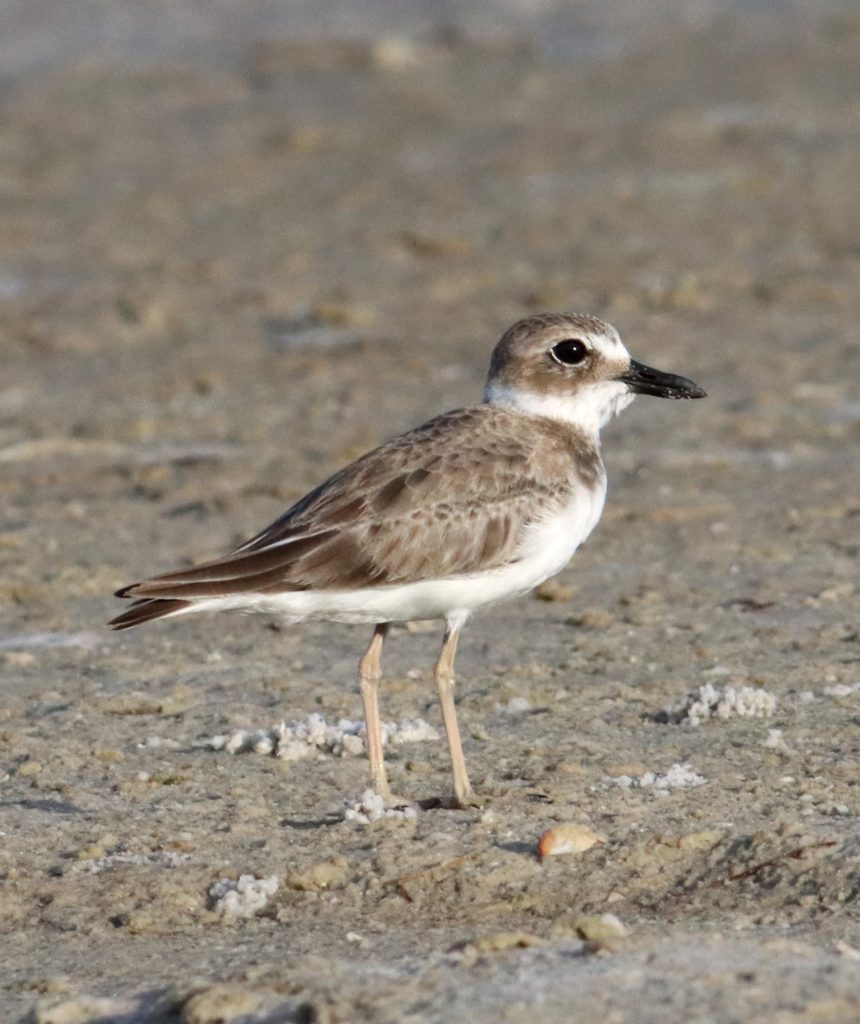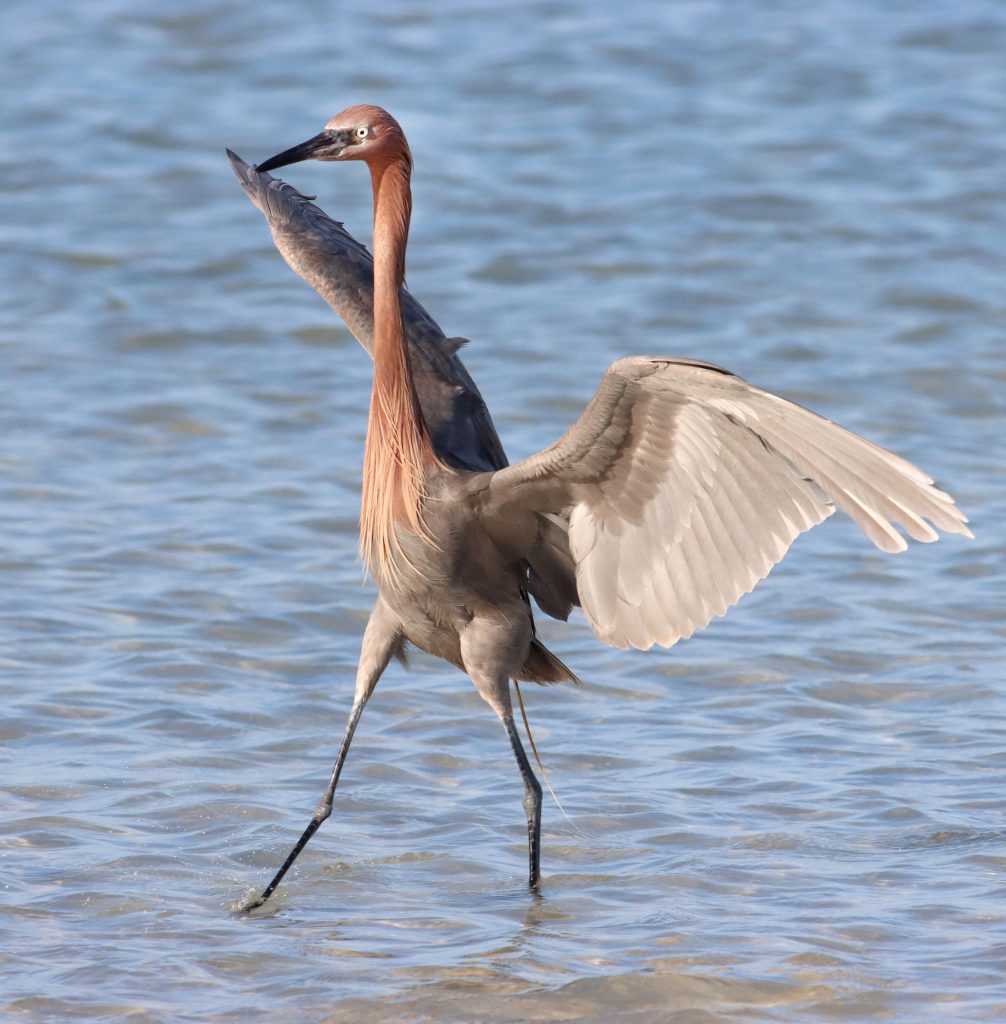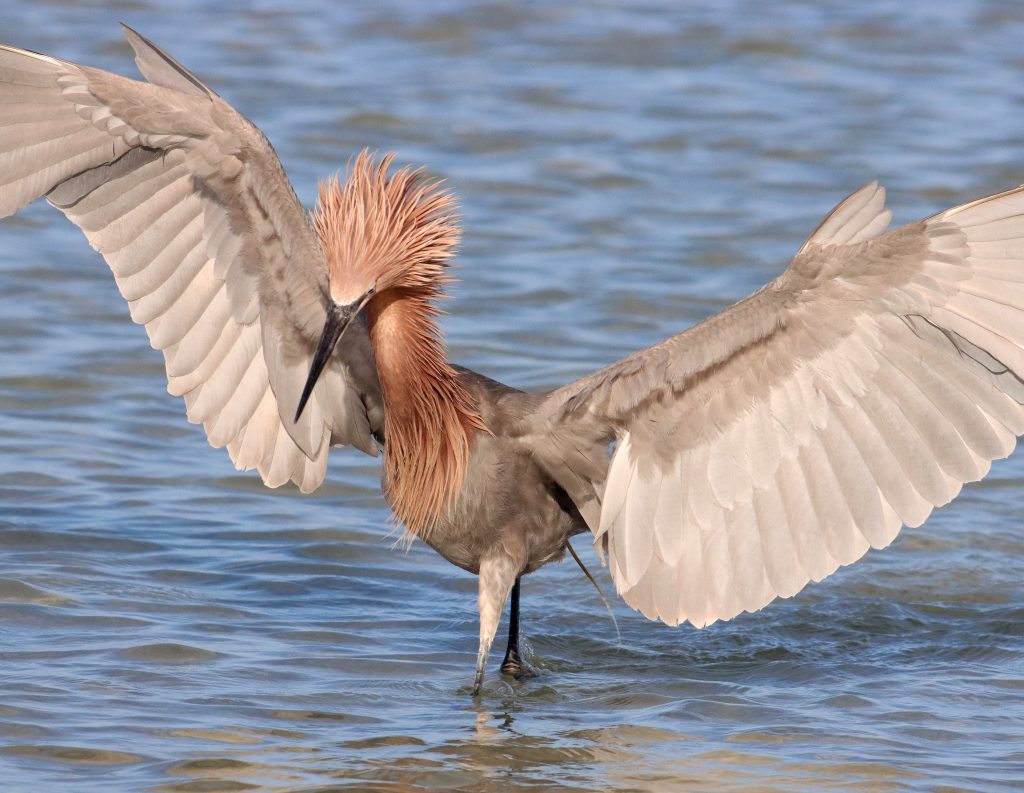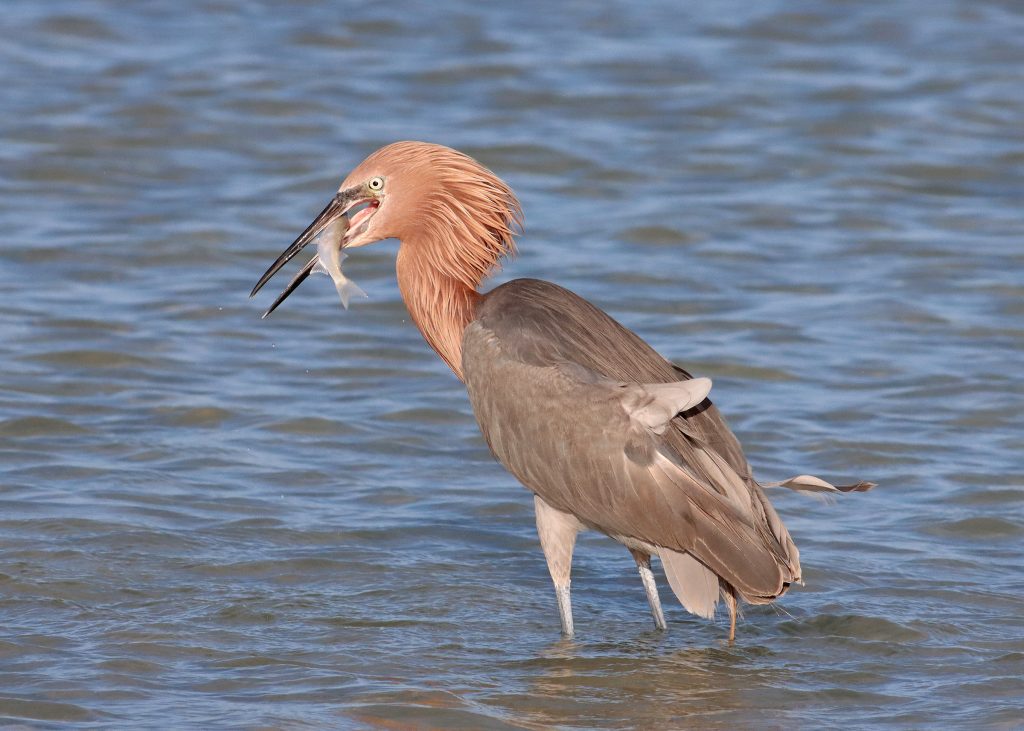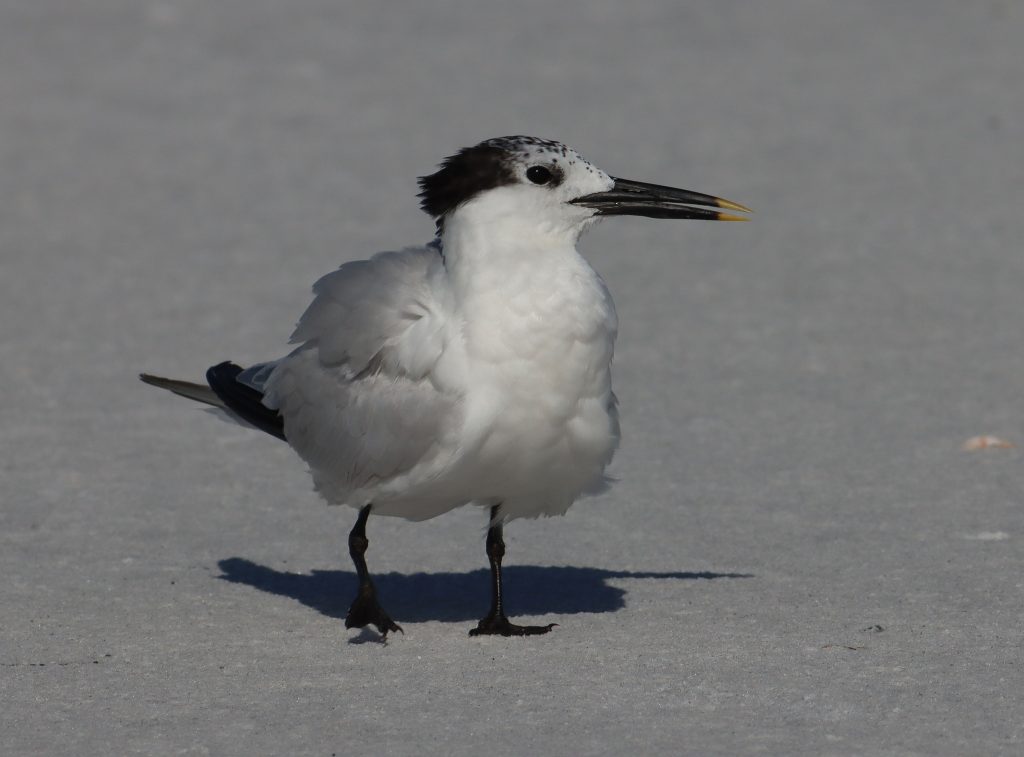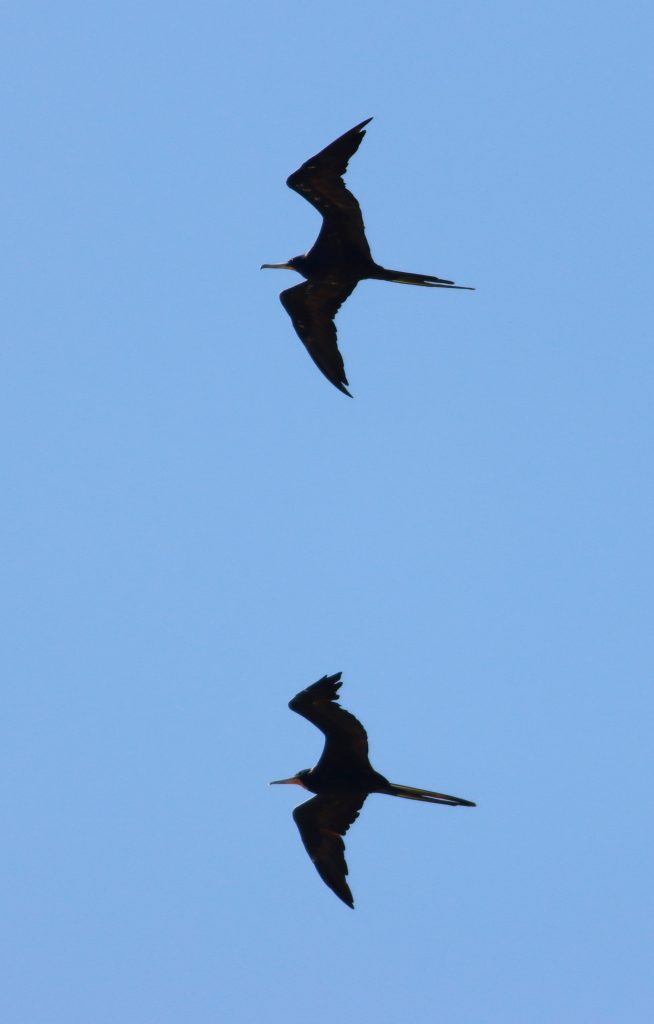Most of my birding in Florida on this recent trip has been inland, near my family’s home. Brother Rich and I decided to take a trip to the coast for a dozen or so target species that we were hoping to see in Ft. De Soto Park in St. Petersburg. This is a great migrant trap for landbirds during the appropriate seasons, but we mostly had shorebirds and sea birds on today’s hoped-for list. The park did not disappoint at all, providing great viewing and photography opportunities. It all started with a Loggerhead Shrike (not so unusual for down here) in the parking lot before even unpacking the car.
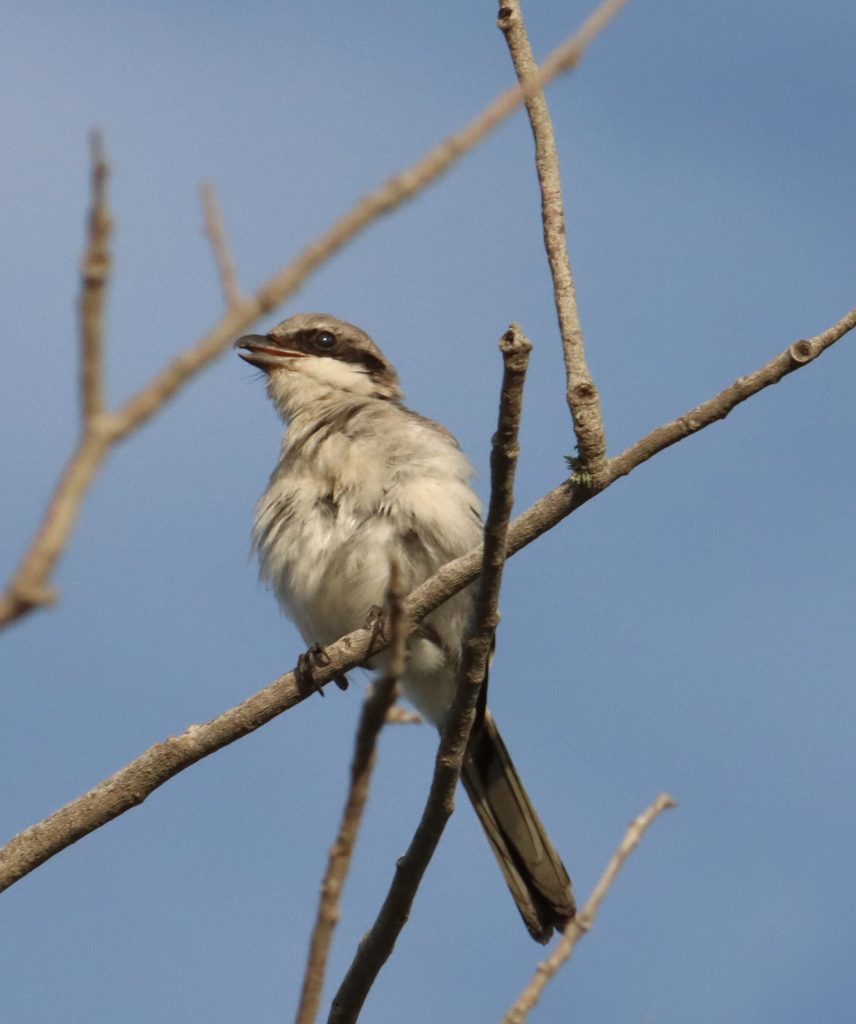
A Loggerhead Shrike that greeted us in the parking lot. I didn’t even have time to get my binoculars unpacked. That’s what you call a great omen.
Upon reaching the beach, we were rewarded with spot-on views of a Marbled Godwit, which turned out to be one of approximately 35 that we saw this day.
Off to the right of the godwit near the grasses was a smallish shorebird. It’s size and location high up on the beach suggested that it might be a Wilson’s Plover, and sure enough, that turned out to be the case. This was a major target bird, but we saw well over a dozen of them through the day, more than I’ve ever seen in a single day.
Fifty yards off to the left was our next target, a Reddish Egret. I was approaching slowly and carefully, hoping not to spook it, when a beach-walking couple passed very close to it. The bird flew just a short distance and then started hunting in its comical yet effective way, yielding too many great photo ops.
All of this happened within the first 15 minutes or so of arrival. Could it get any better? Well, how about a flock of 33 Roseate Spoonbills?
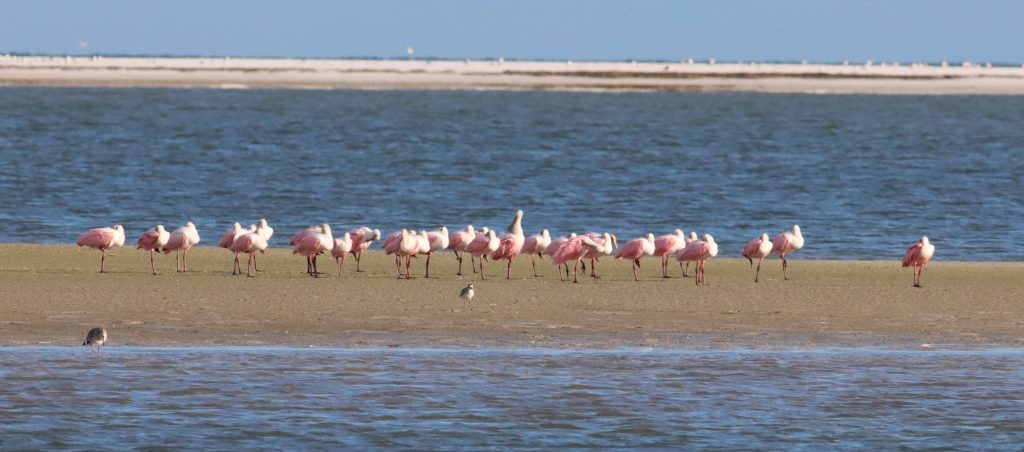
Here is the flock of Roseate Spoonbills. I counted 33 Spoonbills here, FAR more than I’ve ever seen in a single location.
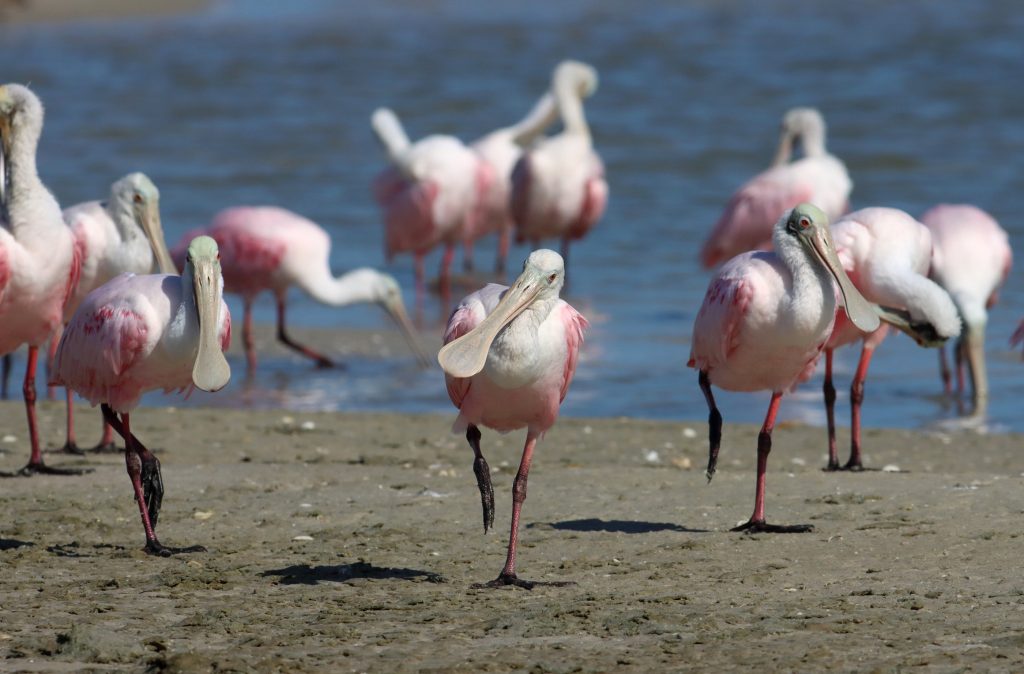
Those paddle-shaped bills on the Spoonbills just don’t seem real. Especially compared to the typical dagger-shaped bills that we see on the more familiar herons and egrets.
Or how about a dozen or more Snowy Plovers, at times in close proximity to Wilson’s Plover for a great comparison of two of our more difficult shorebird species.
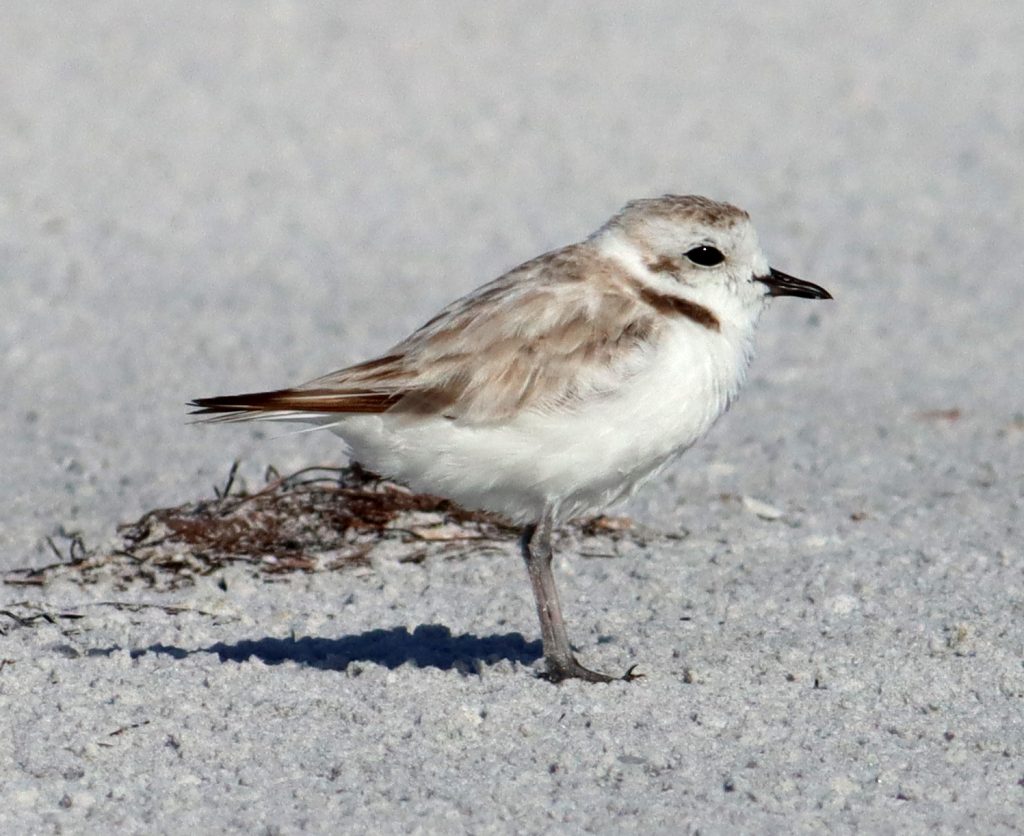
Snowy Plover. We would have been happy seeing a single one of these birds, but were able to view more than a dozen today, typically at very close range that can make a bird photographer drool.
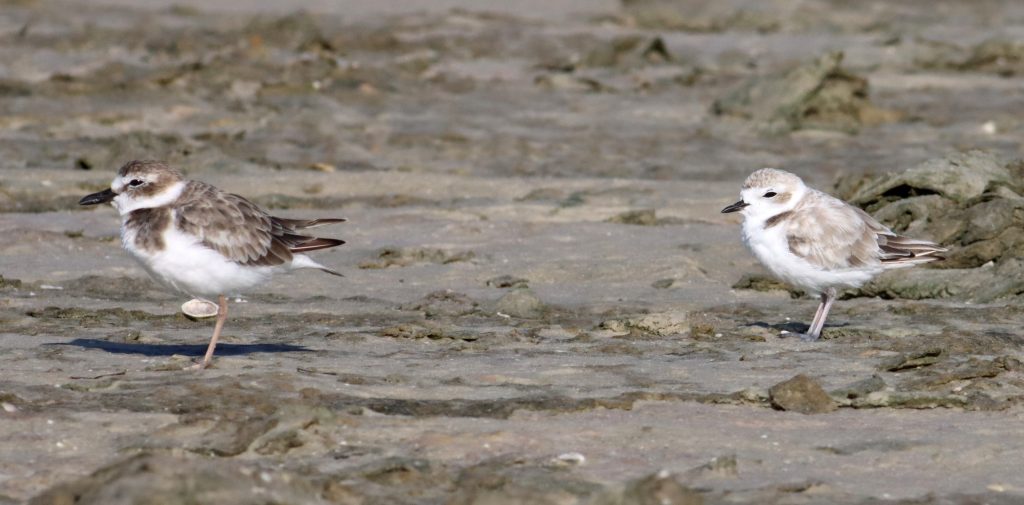
Here we have a comparison of Wilson’s Plover on the left and a Snowy Plover on the right. Notice especially the darker plumage of the Wilson’s and the difference in bill sizes, with the enormous Wilson’s Plover honker and the delicate bill of the Snowy.
Or how about a banded Piping Plover for yet another plover comparison. This bird was banded in North Dakota in 2017. I didn’t know that they even breed in North Dakota. You learn something new every day.

This banded Piping Plover was reported to the Bird Banding Lab, which quickly replied back that it was banded in North Dakota in 2017. Cool.
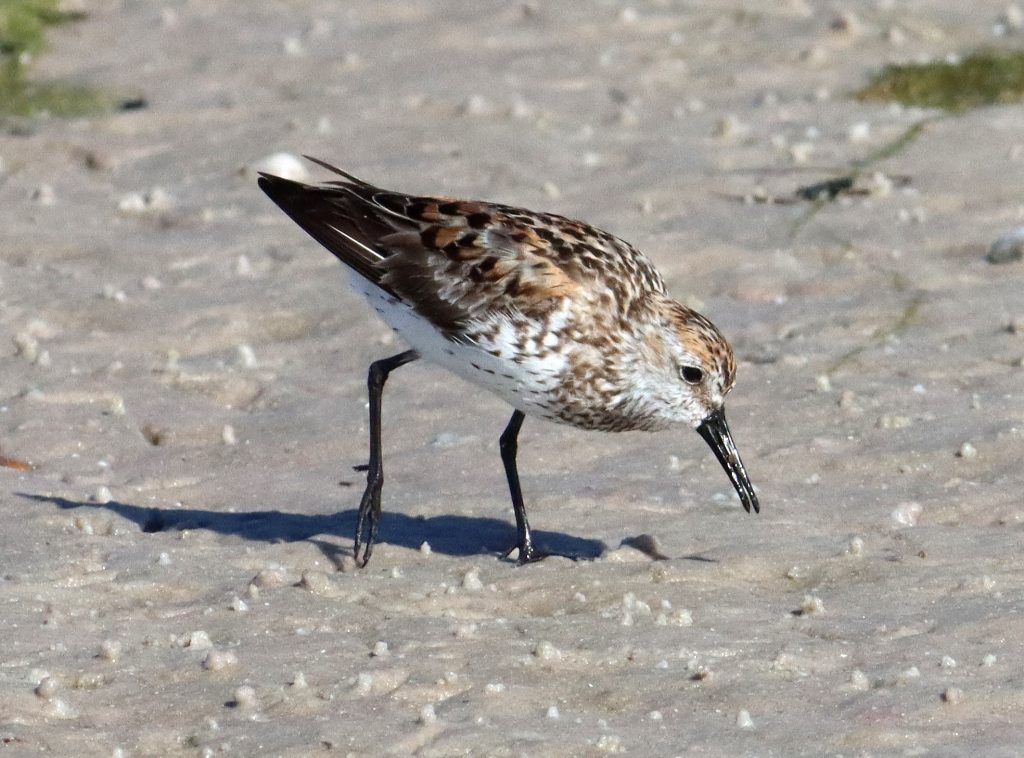
The plovers weren’t the only shorebirds around today. This is a lovely Western Sandpiper, transitioning out of breeding plumage.
Or how about tern-a-palooza. Flocks of terns littered the beach, with more than 200 Sandwich Terns, dozens of Royals, at least 150 nesting Least Terns, along with Common Terns and single Caspian Terns and Black Terns thrown into the mix. I love the needle-in-a-haystack feel of searching through tern flocks.
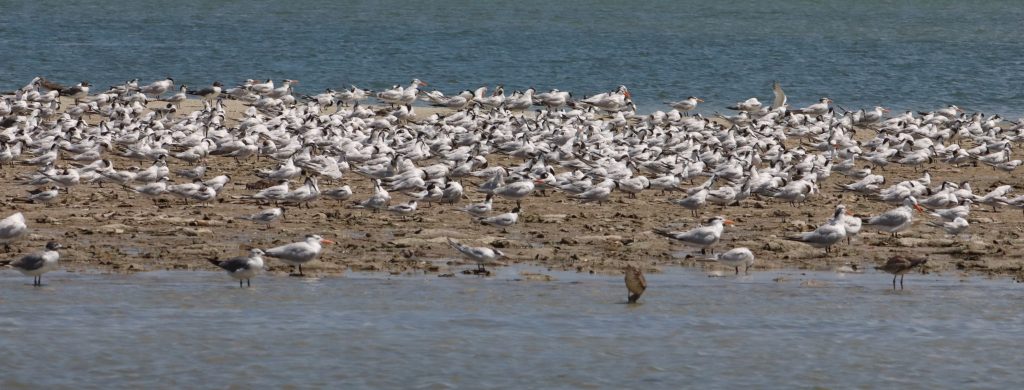
This is just part of the largest mostly-tern flock after the tide rose, to give you an idea of the number of birds that were on the beach here at Ft. De Soto. I love searching through a flock like this for anything that is different.

A Black Tern spotted within the tern flock. I was hoping to find one in complete breeding plumage, but this was a nice find nonetheless.
I was hoping to spot some Magnificent Frigatebirds on this excursion, because…..well, because they are magnificent. It was ridiculously easy. On the drive into the park we saw two flocks of at least 15 birds each, and later we spotted occasional singletons or pairs flying over the beach. They are great soaring birds, perhaps matched only by the Brown Pelicans that were also soaring over the beach. There are few things that I can say with absolute certainty, but I can say for certain that I will never tire of watching pelicans.

Brown Pelicans in flight. They are huge birds with a seemingly effortless and unhurried flight style.
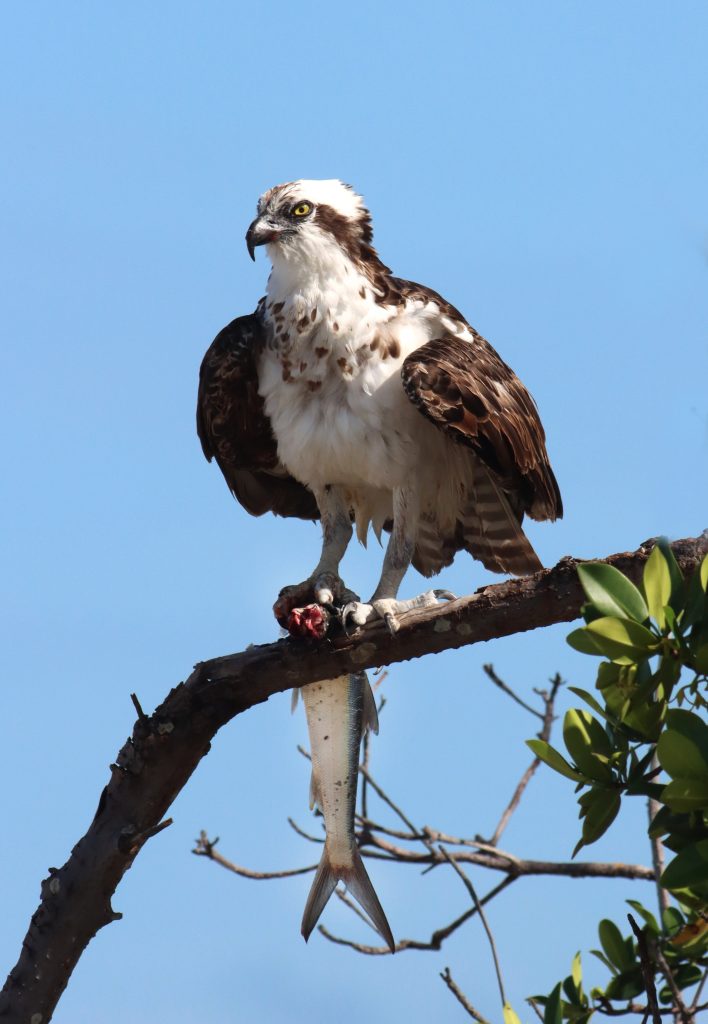
OK, I know…a requisite Osprey-with-fish photo. But I don’t often get as close to them as I did with this bird.
Back in the parking area, Rich spotted a grayish bird on a wire that didn’t quite look like the superficially similar Northern Mockingbirds or Loggerhead Shrikes. This turned out to be a Gray Kingbird, with its massive bill and relatively short tail; a great bird to see anywhere in the US.
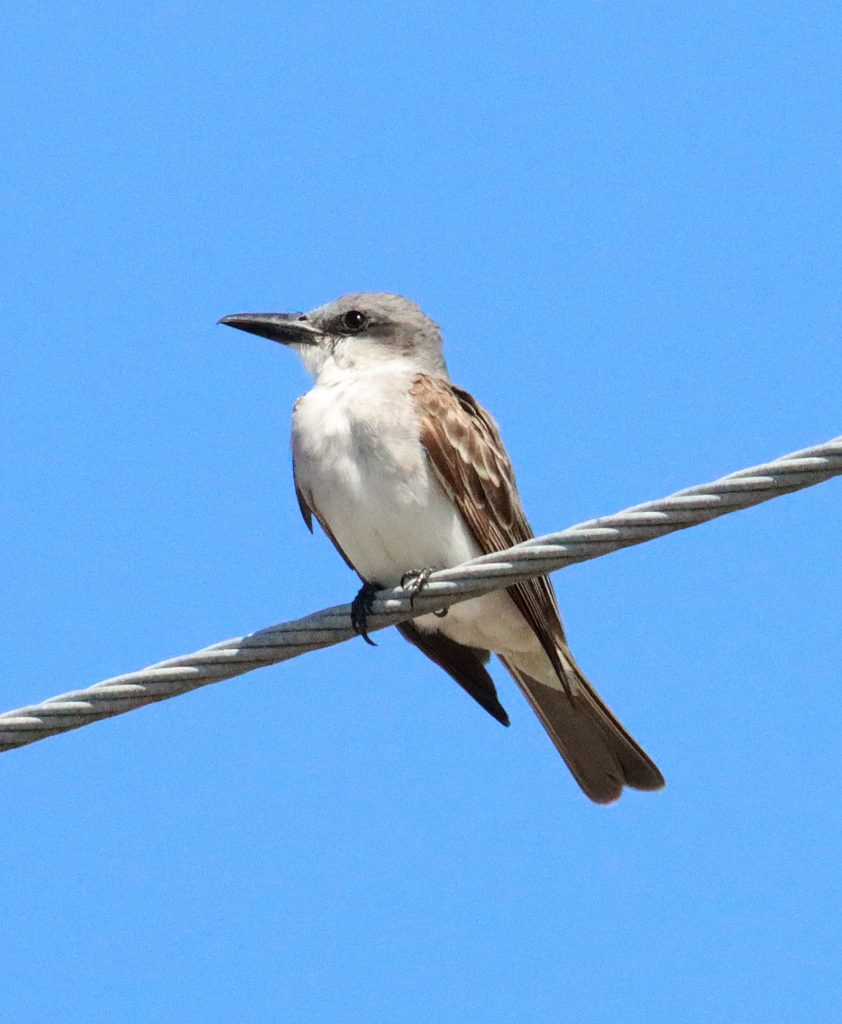
Gray Kingbird. They are relatively grayish with a dark facial mask, similar to Loggerhead Shrikes, but the larger bill and shorter tail distinguish them.
What a great day overall…Snowy and Wilson’s Plovers, Magnificent Frigatebird, Gray Kingbird, Loggerhead Shrike, Black and Sandwich Terns, Marbled Godwit, and Reddish Egret all are tough birds to see in NJ, and here we had them all in a single day often at point-blank range. Mix in a couple of swims in the gulf and a super Thai lunch, and it was a day that couldn’t be beat.
